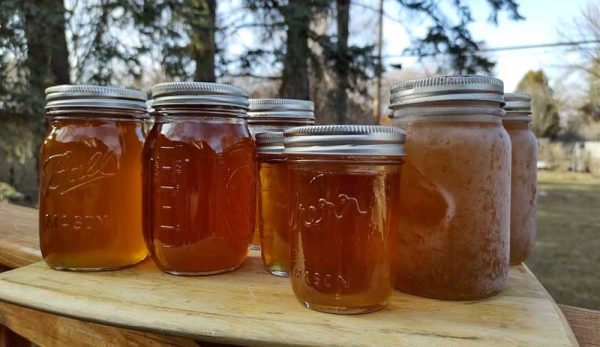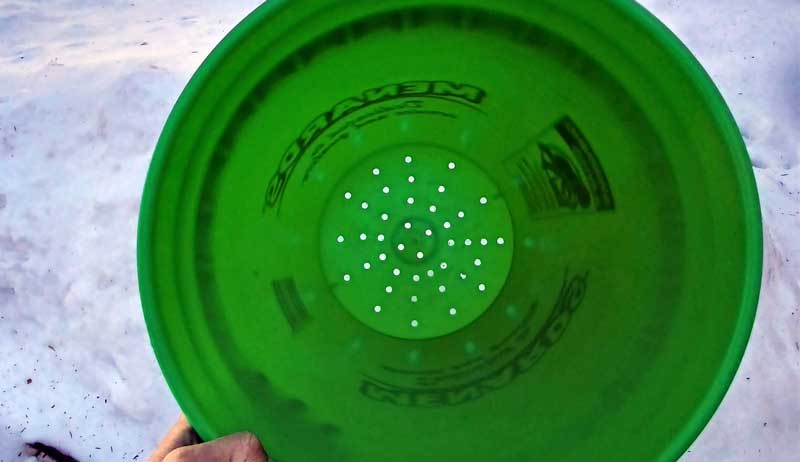
My family loves tapping our single silver maple tree. Or I should say we love the process of turning that maple sap into delicious maple syrup and enjoying the end results. We’re able to get 6 to 9 pints each season depending on the weather.
We tap and collect from early to mid-March. We get a big fire roaring to boil the sap into syrup. This boiling process can take a lot of time—too much to accomplish in a night after work—so we tend to take weekends to boil it down. Which means a lot of sap to deal with all at once!
But years ago we stumbled across a process of freezing and melting the sap before boiling, and it has stuck with us ever since!
Working with Nature
Maple sap flows best when temperatures are below freezing at night and above freezing during the day. A nice sunny day in the upper 30s to 40s with nights in the upper 20s are perfect conditions. This method comes from our local Indigenous people and uses nature’s tendency to freeze at night during the peak of the maple run.

After tapping and collecting sap into buckets, you simply freeze the sap, then let it thaw. You can mimic nature by banking snow around a bucket or by dropping a bucket of sap into a chest freezer overnight.
The sap that thaws and melts first contains most of the sugar. The remaining ice holds very little sugar.
The Process
After sap has frozen, we transfer the frozen sap to a “draining bucket,” (another 5-gallon bucket with many holes drilled in the bottom) which fits inside a solid 5-gallon bucket. You can easily raise the draining bucket up on the edges to keep the melted sap separate.

We let it sit at room temperature until the first third has melted and drained through, usually the better part of a day. You can toss the remaining ice chunk. Place the melted and slightly condensed sap back to freeze and repeat the freeze-melt cycle. On the second round of melting keep the first half that melts.
Tip: I use a wine corkscrew to screw into the frozen sap and lift it out of the bucket!
Typical raw sap contains 1 to 3 percent sugar. After two rounds of “freeze and melt,” the sap will contain between 5 to 16 percent sugar. This means a much shorter boil time.
By using the freeze-and-melt method for two consecutive rounds, you retain around 80 percent of the sugar but reduce the volume of liquid to a mere 20 percent of what you started with. Considering the ratio of sap collected to maple syrup made is generally 40 (sap) to 1 (syrup), it is nice to have a jump start on the concentration process.
Read more: What supplies do you need to tap a maple tree? Here are the basics.
Sweet Success
I love this method because it allows us to collect and hold large amounts of sap, and we can always use a freezer (or the last of snow from shady areas) even as the weather warms. It also helps with those years when the sap flow starts but then stops for longer periods. You can’t let sap sit outside if it is over 40 degrees F for very long. You’ll know your sap has turned if it starts to look cloudy.
Once we have collected the melted sap, we then start the regular boiling process on an open fire. And we still finish the syrup off inside on a stove.
This is a great way to harness the power of nature’s natural cycles and cut down on the overall time (and firewood) needed to boil down sap into sugar.
My co-author and I have lots more maple sugaring details in our book, Small-Scale Homesteading. You can also check out my website for homesteading tips.
—Michelle Bruhn
Forks in the Dirt




